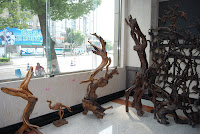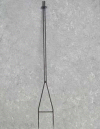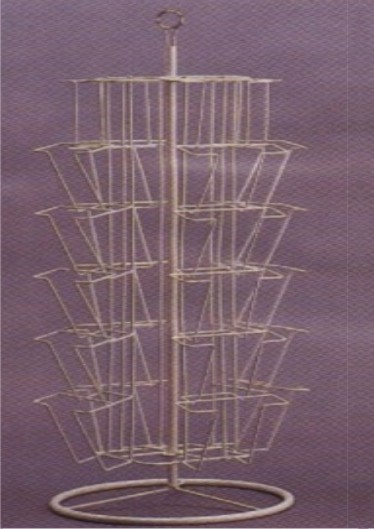

size:53x53x86cm 16x0.8mm
Shell Fabric:600D
Shell Fabric:600D
brochure box、sign Frame、acrylic、fixtures display、wire rack、metal plates 、cloths rack、metal shelf,scrap metal、free standing flyer boxes、etal plates and MDF、made in china





 Traditional Chinese decorative knots, also known as Chinese knots, are typical local arts of China. They are a distinctive and traditional Chinese folk handicraft woven separately from one piece of thread and named according to its shape and meaning. In Chinese, "knot" means reunion, friendliness, peace, warmth, marriage, love, etc. Chinese knots are often used to express good wishes, including happiness, prosperity, love and the absence of evil.Chinese people have known how to tie knots using cords ever since they began learned how to attach animal pelts to their bodies to keep warm thousands of years ago. As civilization advanced, Chinese people used knots for more than just fastening and wrapping. Knots were also used to record events, while others had a purely ornamental function. In 1980, dedicated connoisseurs collected and arranged decorative yet practical knots passed down over centuries in China. After studying the structures of these knots, the devotees set about creating new variations and increasing the decorative value of knots. The exquisitely symmetrical knots that come in so many forms are as profound as the great cultural heritage of the Chinese people.The Chinese knot is based on over a dozen basic knots named according to their distinctive shapes, usages, or origins. The Two-Coins Knot, for example, is shaped like two overlapping coins once used in ancient China. The Button Knot functions as a button, and the Reversed Swastika Knot was derived from the Buddhist symbol commonly seen on the streamers hanging down from the waistband of the Buddhist Goddess of Mercy.The knots are pulled tightly together and are sturdy enough to be used for binding or wrapping, making them very practical. Furthermore, the complicated structure of the Chinese knot allows all kinds of variations and enhances its decorative value. Almost all basic Chinese knots are symmetrical, which has set certain technical limitations on the design and creation of new patterns and themes. Symmetry is consistent with time-honored ornamental and aesthetic standards in China. Visually, the symmetrical designs are more easily accepted and appreciated by Chinese people.Except for the Two-Coins Knot, the Chinese knot is three dimensional in structure. It comprises two planes tied together leaving a hollow center. Such a structure lends rigidity to the work as a whole and keeps its shape when hung on the wall. The hollow center also allows for the addition of precious stones.Crafting the Chinese knot is a three-step process which involves tying knots, tightening them and adding the finishing touches. Knot-tying methods are fixed, but the tightening can determine the degree of tension in a knot, the length of loops (ears) and the smoothness and orderliness of the lines. Thus, how well a Chinese knot has been tightened can demonstrate the skill and artistic merit of a knot artist. Finishing a knot means inlaying pearls or other precious stones, starching the knot into certain patterns, or adding any other final touches.Since ancient times, the Chinese knot has adorned both the fixtures of palace halls and the daily implements of countryside households. The Chinese Macrame has also appeared in paintings, sculptures and other pieces of folk art. For instance, the Chinese Macrame was used to decorate chairs used by the emperor and empress, corners of sedans, edges of parasols, streamers attached to the waistbands of lady's dresses, as well as all manners of seals, mirrors, pouches, sachets, eyeglass cases, fans and Buddhist rosaries.The endless variations and elegant patterns of the Chinese knot, as well as the multitude of different materials that can be used (cotton, flax, silk, nylon, leather and precious metals, such as gold and silver, to name a few) have expanded the functions and widened the applications of the Chinese knot. Jewelry, clothes, gift-wrapping and furniture can be accentuated with unique Chinese knot creations. Large Chinese knot wall hangings have the same decorative value as fine paintings or photographs, and are perfectly suitable for decorating a parlor or study.The Chinese knot, with its classic elegance and ever-changing variations, is both practical and ornamental, fully reflecting the grace and depth of Chinese culture.
Traditional Chinese decorative knots, also known as Chinese knots, are typical local arts of China. They are a distinctive and traditional Chinese folk handicraft woven separately from one piece of thread and named according to its shape and meaning. In Chinese, "knot" means reunion, friendliness, peace, warmth, marriage, love, etc. Chinese knots are often used to express good wishes, including happiness, prosperity, love and the absence of evil.Chinese people have known how to tie knots using cords ever since they began learned how to attach animal pelts to their bodies to keep warm thousands of years ago. As civilization advanced, Chinese people used knots for more than just fastening and wrapping. Knots were also used to record events, while others had a purely ornamental function. In 1980, dedicated connoisseurs collected and arranged decorative yet practical knots passed down over centuries in China. After studying the structures of these knots, the devotees set about creating new variations and increasing the decorative value of knots. The exquisitely symmetrical knots that come in so many forms are as profound as the great cultural heritage of the Chinese people.The Chinese knot is based on over a dozen basic knots named according to their distinctive shapes, usages, or origins. The Two-Coins Knot, for example, is shaped like two overlapping coins once used in ancient China. The Button Knot functions as a button, and the Reversed Swastika Knot was derived from the Buddhist symbol commonly seen on the streamers hanging down from the waistband of the Buddhist Goddess of Mercy.The knots are pulled tightly together and are sturdy enough to be used for binding or wrapping, making them very practical. Furthermore, the complicated structure of the Chinese knot allows all kinds of variations and enhances its decorative value. Almost all basic Chinese knots are symmetrical, which has set certain technical limitations on the design and creation of new patterns and themes. Symmetry is consistent with time-honored ornamental and aesthetic standards in China. Visually, the symmetrical designs are more easily accepted and appreciated by Chinese people.Except for the Two-Coins Knot, the Chinese knot is three dimensional in structure. It comprises two planes tied together leaving a hollow center. Such a structure lends rigidity to the work as a whole and keeps its shape when hung on the wall. The hollow center also allows for the addition of precious stones.Crafting the Chinese knot is a three-step process which involves tying knots, tightening them and adding the finishing touches. Knot-tying methods are fixed, but the tightening can determine the degree of tension in a knot, the length of loops (ears) and the smoothness and orderliness of the lines. Thus, how well a Chinese knot has been tightened can demonstrate the skill and artistic merit of a knot artist. Finishing a knot means inlaying pearls or other precious stones, starching the knot into certain patterns, or adding any other final touches.Since ancient times, the Chinese knot has adorned both the fixtures of palace halls and the daily implements of countryside households. The Chinese Macrame has also appeared in paintings, sculptures and other pieces of folk art. For instance, the Chinese Macrame was used to decorate chairs used by the emperor and empress, corners of sedans, edges of parasols, streamers attached to the waistbands of lady's dresses, as well as all manners of seals, mirrors, pouches, sachets, eyeglass cases, fans and Buddhist rosaries.The endless variations and elegant patterns of the Chinese knot, as well as the multitude of different materials that can be used (cotton, flax, silk, nylon, leather and precious metals, such as gold and silver, to name a few) have expanded the functions and widened the applications of the Chinese knot. Jewelry, clothes, gift-wrapping and furniture can be accentuated with unique Chinese knot creations. Large Chinese knot wall hangings have the same decorative value as fine paintings or photographs, and are perfectly suitable for decorating a parlor or study.The Chinese knot, with its classic elegance and ever-changing variations, is both practical and ornamental, fully reflecting the grace and depth of Chinese culture. 




 In much of Asia, especially the so-called "rice bowl" cultures of China, Japan, Korea, and Vietnam, food is usually eaten with chopsticks.Chopsticks are two long, thin, usually tapered, pieces of wood. Bamboos the most common material, but they are also be made of various types of wood, as well as plastic, porcelain, animal bone, ivory, metal, coral, agate, and jade.During the Middle Ages, aristocrats often favored silver chopsticks since it was thought that silver would turn color if it came into contact with poison.Elegant CraftsmanshipSometimes chopsticks are quite artistic. Chopsticks can be made of lacquered wood and covered with artwork. Truly elegant chopsticks might be made of gold and embossed in silver with Chinese calligraphy. Artisans also combine various hardwoods and metal to create distinctive designs.A child's plastic set of chopsticks might feature a cartoon character, such as Mickey Mouse, while aluminum from recycled cans might find new life as a lightweight, easy-to-clean pair of chopsticks.Elaborate CarvingsChopsticks may be totally smooth or carved or modeled ripples. Silver or gold paint can be used to give them a rough texture. In Thailand, wood is often elaborately carved into chopsticks. The ends of chopsticks can be rounded or squared, while the tips can be blunt or sharp."Fork chops" are chopsticks for insecure Westerners and feature chopsticks at one end and forks and knives at the other, just in case the user can't manage during the meal.Some believe Confucius championed chopsticks over knives, which would remind people of slaughterhouses.Confucius Promotes Non-ViolenceThe Chinese have been using chopsticks for five thousand years. People probably cooked their food in large pots, using twigs to remove it. Overtime, as population grew, people began chopping food into small pieces so it would cook more quickly. Small morsels of food could be eaten without knifes and so the twigs gradually turned into chopsticks.Some people think that the great scholar Confucius, who lived from roughly 551 to 479 B.C., influenced the development of chopsticks. A vegetarian, Confucius believed knives would remind people of slaughterhouses and were too violent for use at the table. Non-Chopstick CountriesChopsticks are not used everywhere in Asia. In India, Indonesia, Malaysia, the Philippines, Thailand, and Central Asia most people have traditionally eaten with their hands.
In much of Asia, especially the so-called "rice bowl" cultures of China, Japan, Korea, and Vietnam, food is usually eaten with chopsticks.Chopsticks are two long, thin, usually tapered, pieces of wood. Bamboos the most common material, but they are also be made of various types of wood, as well as plastic, porcelain, animal bone, ivory, metal, coral, agate, and jade.During the Middle Ages, aristocrats often favored silver chopsticks since it was thought that silver would turn color if it came into contact with poison.Elegant CraftsmanshipSometimes chopsticks are quite artistic. Chopsticks can be made of lacquered wood and covered with artwork. Truly elegant chopsticks might be made of gold and embossed in silver with Chinese calligraphy. Artisans also combine various hardwoods and metal to create distinctive designs.A child's plastic set of chopsticks might feature a cartoon character, such as Mickey Mouse, while aluminum from recycled cans might find new life as a lightweight, easy-to-clean pair of chopsticks.Elaborate CarvingsChopsticks may be totally smooth or carved or modeled ripples. Silver or gold paint can be used to give them a rough texture. In Thailand, wood is often elaborately carved into chopsticks. The ends of chopsticks can be rounded or squared, while the tips can be blunt or sharp."Fork chops" are chopsticks for insecure Westerners and feature chopsticks at one end and forks and knives at the other, just in case the user can't manage during the meal.Some believe Confucius championed chopsticks over knives, which would remind people of slaughterhouses.Confucius Promotes Non-ViolenceThe Chinese have been using chopsticks for five thousand years. People probably cooked their food in large pots, using twigs to remove it. Overtime, as population grew, people began chopping food into small pieces so it would cook more quickly. Small morsels of food could be eaten without knifes and so the twigs gradually turned into chopsticks.Some people think that the great scholar Confucius, who lived from roughly 551 to 479 B.C., influenced the development of chopsticks. A vegetarian, Confucius believed knives would remind people of slaughterhouses and were too violent for use at the table. Non-Chopstick CountriesChopsticks are not used everywhere in Asia. In India, Indonesia, Malaysia, the Philippines, Thailand, and Central Asia most people have traditionally eaten with their hands.





























.jpg)











